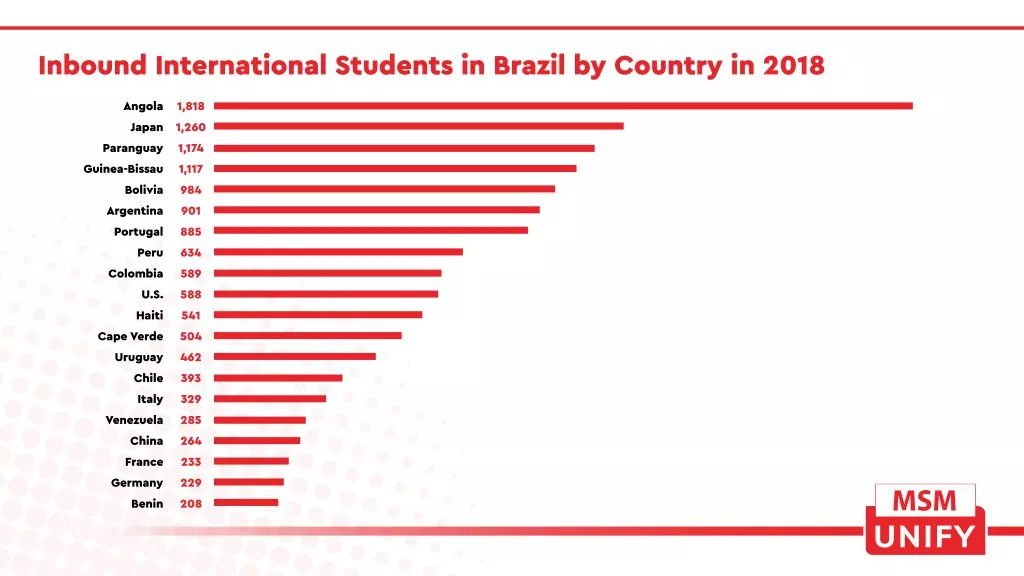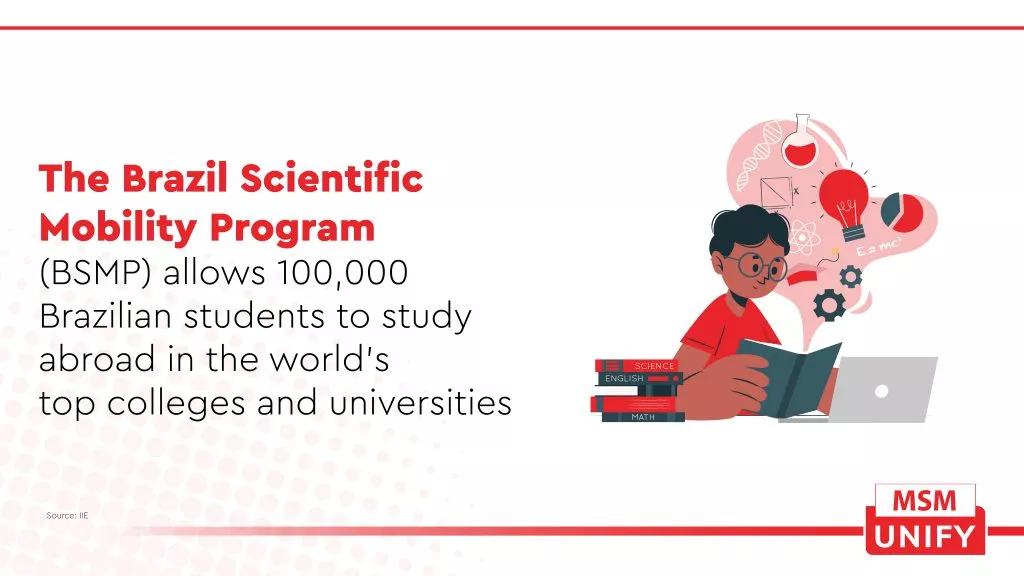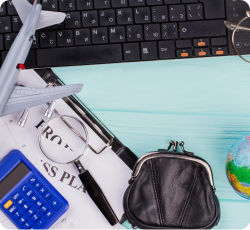Brazil, which currently ranks as the 6th most populous country globally, is gaining traction in the international education sector. In terms of local education in the country, the quality of education has been improving over the last 15 years.
Brazil may not be a top destination for international students. However, it can be a potent source of international students. In 2017, only 20,671 international learners were enrolled in Brazilian higher education institutions (HEIs), with the majority of the students coming from the neighboring country, Angola.


Outbound Mobility of Students in Brazil
Brazil has become a notable player in the higher international education sector and a good source of international students. In 2014, outbound mobility of students from Brazil recorded an impressive 500 percent increase. Approximately 230,000 students from Brazil study abroad, according to a report by the Brazilian Association of Educational and Cultural Travel Organizations.

This significant increase was mainly due to the Science Without Borders program, launched in 2011. The program aimed to create a successful interchange and international student mobility. Scholarships were offered to over 83,000 Brazilian students to study at top institutions in Canada, Australia, and the United States.
New Zealand is another top study destination exerting efforts to bring Brazilian students into its schools. The country allows students to work for up to one year after graduating from their academic programs.
Rise in Number of Brazilian Students in the US
One of the top destination countries of students from Brazil is the United States. From 2018 to 2019, the number of Brazilian students entering U.S. schools increased by 9.8 percent, according to the 2019 Open Doors Report on International Educational Exchange. This is the second-largest percentage increase in students from any other country in the world during that period.

While student applications to U.S. institutions from top sender China decreased by 18 percent in 2019-20, applications from Brazil increased significantly by 41 percent. According to the 2019 Open Doors report, of the 16,059 Brazilian students in the United States, 48.4 percent were undergraduates, 29.5 percent were postgraduate students, and 12.7 percent pursued Optional Practical Training (OPT) programs.
Some of the foundations and organizations that support Brazilian student mobility are CAPES, Fulbright, and Education USA. These regularly hold virtual fairs and programs that help bright but underprivileged Brazilians get scholarships in U.S. higher education institutions.
Future of Brazil as Source of International Students
As more Brazilian students consider taking up higher studies abroad, they will be put in a global spotlight and more opportunities will come their way. The government in Brazil has been formulating ways to bring more students to study abroad, gain broad insights and apply new skills and knowledge back home.

Brazil has experienced social inequalities in the past; access to higher education was limited to those who could afford it. That is why the government has developed programs and partnerships with institutions abroad to provide scholarships for top-performing Brazilian students.
Affordability is still key for Brazilian students. In 2020, it was reported that Brazilian applicants had lower approval rates for Canadian study permits because of their inability to meet the financial requirements.
Brazil is the 5th largest source of international students in Canada. That’s why there must be initiatives in providing financial aid to students. Aside from student scholarships, part-time work during studies and the opportunity to secure employment after graduation are significant factors in maintaining the Brazilian student market.
Based on education data of recent years, Brazil proves to be a potential source of international students. Higher education institutions and education service providers must be proactive in increasing international student mobility in Brazil. Local education agents must establish strong personal relations with the students as their families tend to rely on these representatives for counseling and support during the entire study period.
Agencies or education providers that are associated with the Brazilian Educational & Language Travel Association (BELTA) are still the most influential groups to students deciding to study overseas. Thus, education agents must take this as an opportunity to work together in order to increase mobility of Brazilian students in the world.
Agents and higher education institutions must also have more student recruitment fairs and sustained collaborations. Using virtual platforms can help increase traction as the world is still dealing with the COVID-19 pandemic.
MSM Unify is your one-stop platform that connects students, higher education institutions, and agents worldwide. Sign up now to get the latest updates and information on international education.



























